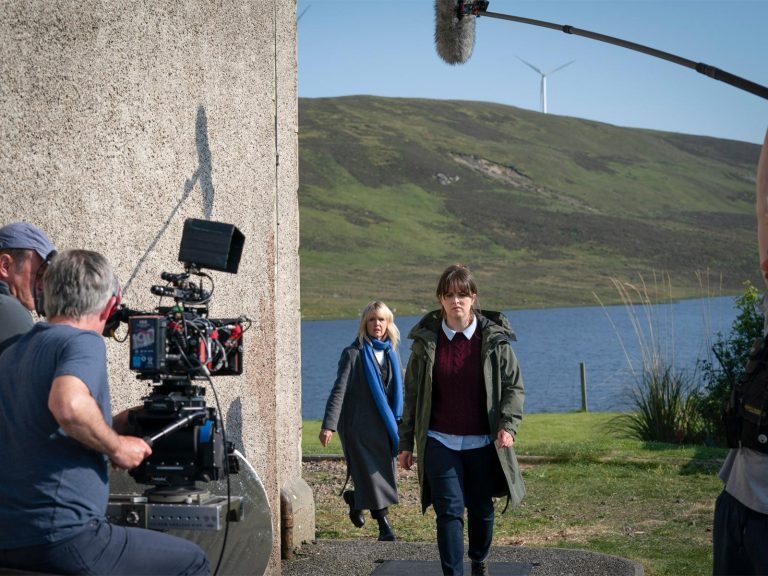Los Angeles – The glossy veneer of peak TV is cracking. Across several high-profile productions, off-camera conflicts – from crew complaints and showrunner-star standoffs to allegations of grueling hours and mismanagement – are spilling into public view, disrupting shooting schedules and testing the limits of damage control.
The flare-ups, described in interviews and public statements, reflect a post-strike landscape under intensifying pressure: tighter budgets, compressed timelines, and heightened scrutiny on workplace culture. Studios are juggling HR inquiries, creative reshuffles, and union protocols as sets grapple with burnout and blurred lines of authority, while social media accelerates leaks and escalates disputes in real time.
This report examines what’s fueling the friction, how networks and streamers are responding, and what the turmoil means for crews, casts, and viewers – from delayed premieres to shifting power dynamics behind the camera.
Table of Contents
- On set tensions over scheduling safety and pay escalate as showrunners rewrite production plans
- Crew and writers cite weak reporting channels inconsistent safety oversight and burnout risks
- Studios urged to install independent ombuds offices publish response timelines and add buffer days to call sheets
- The Way Forward
On set tensions over scheduling safety and pay escalate as showrunners rewrite production plans
Amid mounting crew complaints over compressed call sheets and uncompensated turnarounds, producers this week began overhauling shoot calendars and budget lines, citing insurance pressure and union scrutiny; multiple set sources report last-minute rewrites of scene orders, trimmed stunt days, and newly enforced rest windows as department heads warn of “unsustainable burnout” and coordinators flag near-miss incidents tied to fatigue. Network executives, wary of headline risk and delivery delays, have asked for contingency plans that prioritize on-set safety without blowing costs, while agents say talent availability is complicating reshoots. With mediators monitoring talks and crew reps threatening selective walk-offs, showrunners are quietly recalibrating season arcs, relocating night work, and tightening overtime approvals-moves that could ripple through post timelines and streaming launch targets if productivity slips.
- Scheduling resets: staggered calls, capped night blocks, mandatory 10-hour rest.
- Safety protocols: independent set audits, longer stunt rehearsals, real-time fatigue checks.
- Pay adjustments: pre-approved overtime bands, transparent rate sheets, retroactive make-goods.
- Contingency planning: second-unit pivots, location swaps, leaner company moves.
Crew and writers cite weak reporting channels inconsistent safety oversight and burnout risks
Current and former staffers across multiple high-profile productions describe a production culture where weak reporting channels deter escalation, inconsistent safety oversight leaves gaps on fast-turnaround days, and burnout risks rise as schedules compress; several crew members say hotlines often route back to the very supervisors implicated, safety briefings are skipped or abbreviated when stunt loads increase, and turnaround minimums are squeezed by late-call resets, while union stewards field more fatigue complaints and on-set medics are stretched thin across stages-conditions that sources argue contradict glossy studio policies and reinforce a speak-up-at-your-own-risk norm.
- Opaque reporting paths: hotlines and portals that loop to production management, discouraging confidential escalation.
- Patchy safety meetings: variable hazard briefings on second units and overnight shoots, with inconsistent PPE enforcement.
- Stalled incident logs: app-based reports acknowledged late or not at all, complicating trend tracking and corrective action.
- Excessive hours: 12-16-hour days, short turnarounds, stacked forced calls, and rising reliance on meal waivers.
- Thin coverage: set medics and safety advisors split between locations, reducing real-time oversight.
- Productivity pressure: “one more take” after curfew to avoid company moves, elevating fatigue-related error rates.
Studios urged to install independent ombuds offices publish response timelines and add buffer days to call sheets
Amid cascading complaints of on-set misconduct, overtime fatigue, and opaque HR responses, labor coalitions and safety advocates are pressing studios to adopt concrete accountability infrastructure, including neutral complaint channels, time-bound case handling, and schedule safeguards-measures they argue would reduce legal exposure, protect whistleblowers, and stabilize production timetables as advertisers and insurers heighten scrutiny.
- Independent ombuds offices: Externally managed hotlines and investigators with non-retaliation guarantees, union access, and quarterly anonymized trend reports to boards.
- Published response timelines: Clear 24/48/72-hour benchmarks for intake, triage, and preliminary findings, posted on call sheets and portals, with escalation protocols when deadlines lapse.
- Buffer days on call sheets: Built-in schedule cushions to curb turnaround violations, enable safe reshoots, and separate complaint reviews from active shooting days without punishing crew.
The Way Forward
What happens next will play out on two fronts: on set, where producers and networks are reviewing protocols and, in some cases, pausing shoots, and at the corporate level, where HR inquiries and third‑party investigations continue. Unions have reiterated existing standards around safety and harassment, and several companies say they are updating training and reporting pathways. Any findings could influence staffing decisions, release calendars, and contract talks heading into the next production cycle.
For viewers and advertisers, the immediate question is whether the turbulence will alter what reaches the screen – through cast changes, shortened seasons, or delayed premieres. For the industry, the stakes are broader: how to maintain momentum in a competitive market while addressing workplace culture with more transparency and oversight. As fall slates firm up, the outcomes of these reviews will set the tone for the months ahead. For now, the spotlight is as firmly on set culture as it is on the shows themselves.


